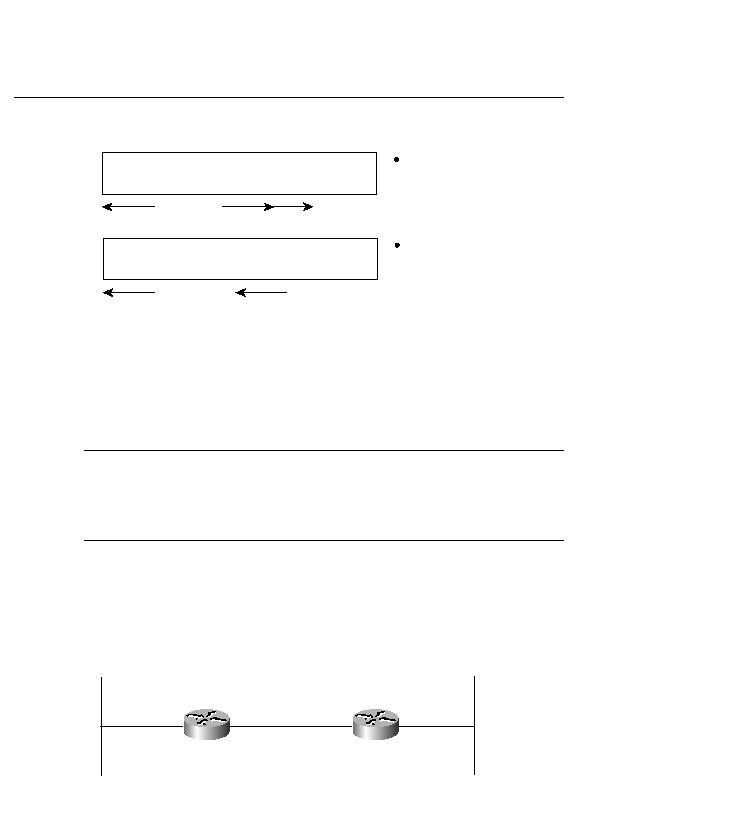
152
Chapter 5: IP Addressing
Figure 5-5
Summarization and Subnetting
Extending IPv4 Address Space
The original RFC for IP was RFC 760. No concept of classes existed, and the address was an
8-bit network ID. RFC 791 introduced a segmentation of the address into classes. RFC 950
introduced subnetting and allowed for efficiency to exist with class addresses. RFCs 15171520
introduced CIDR, which is used primarily on the Internet routing tables.
NOTE
IPv6 stands for Internet Protocol Version 6. IPv6 will soon replace the current version, IPv4.
IPv6 specifically addresses the growing shortage of IPv4 addresses, which are needed to
support all new users who want to be added to the public Internet. Even though you shouldn't
expect it to happen anytime soon, IPv6 is expected to gradually replace IPv4, with the two
working side by side for a while during a transition period.
Discontiguous Subnets
A discontiguous network is comprised of a major network separated by another major network.
In Figure 5-6, network 131.108.0.0 is separated by a subnet of network 137.99.0.0; 131.108.0.0
is a discontiguous network. Figure 5-5 is an example of a discontiguous subnet.
Figure 5-6
Discontiguous Subnets
Prefix
Host
Prefix length
Subnetting
extends prefix
to the right
Prefix
Host
Prefix length
Summarization
collapses prefix to
the left
131.108.5.0/24
137.99.88.0/24
131.108.2.0/24
Router 1
Router 2
.2
.2
.1
.1
87200333.book Page 152 Wednesday, August 22, 2001 2:37 PM
